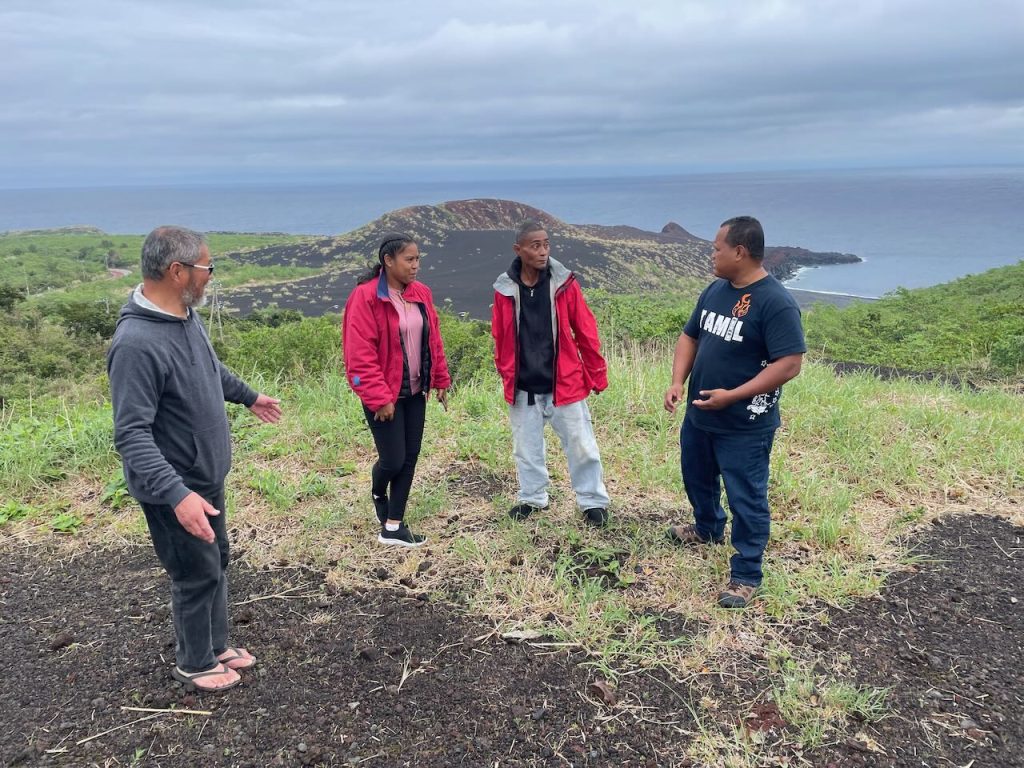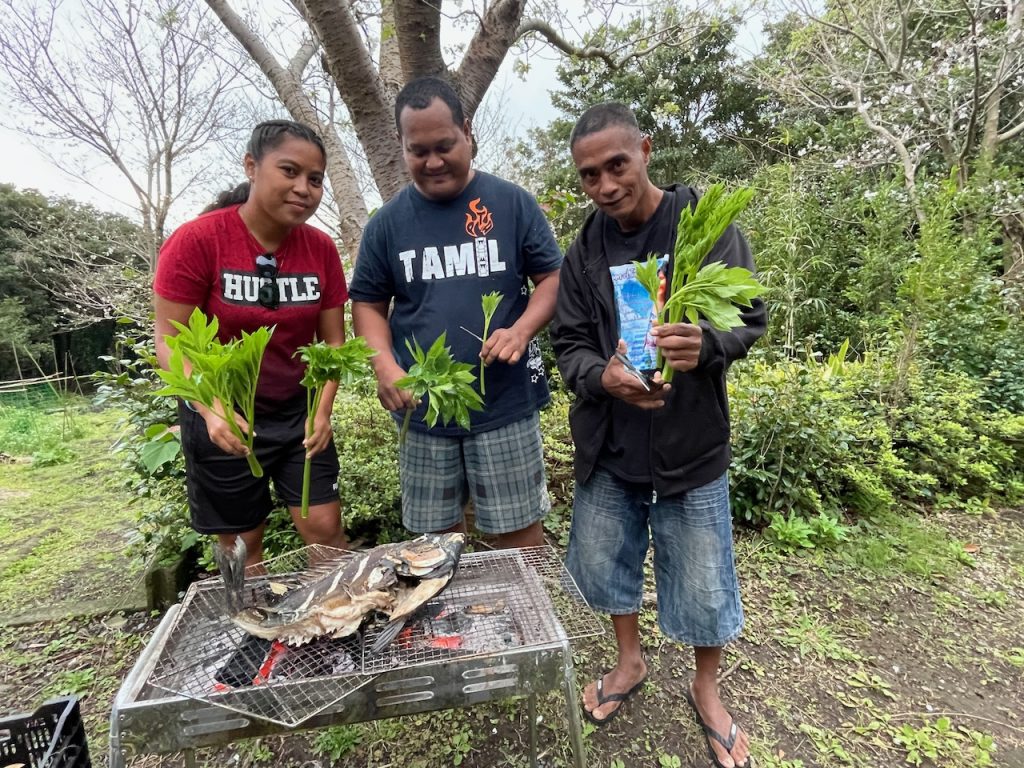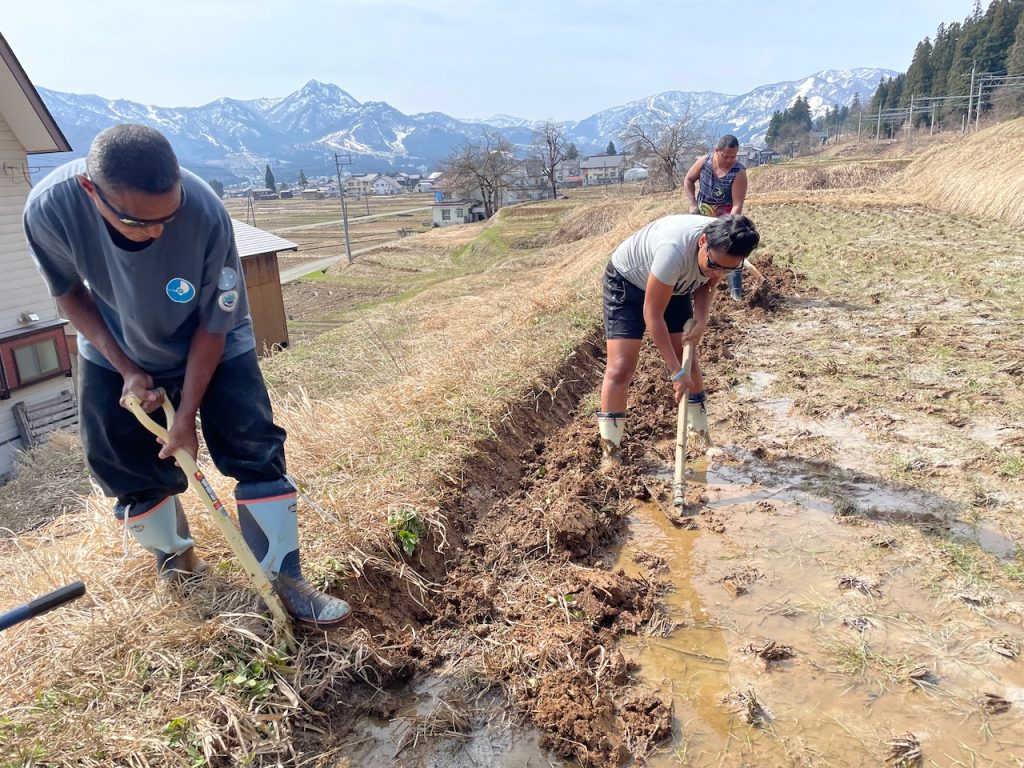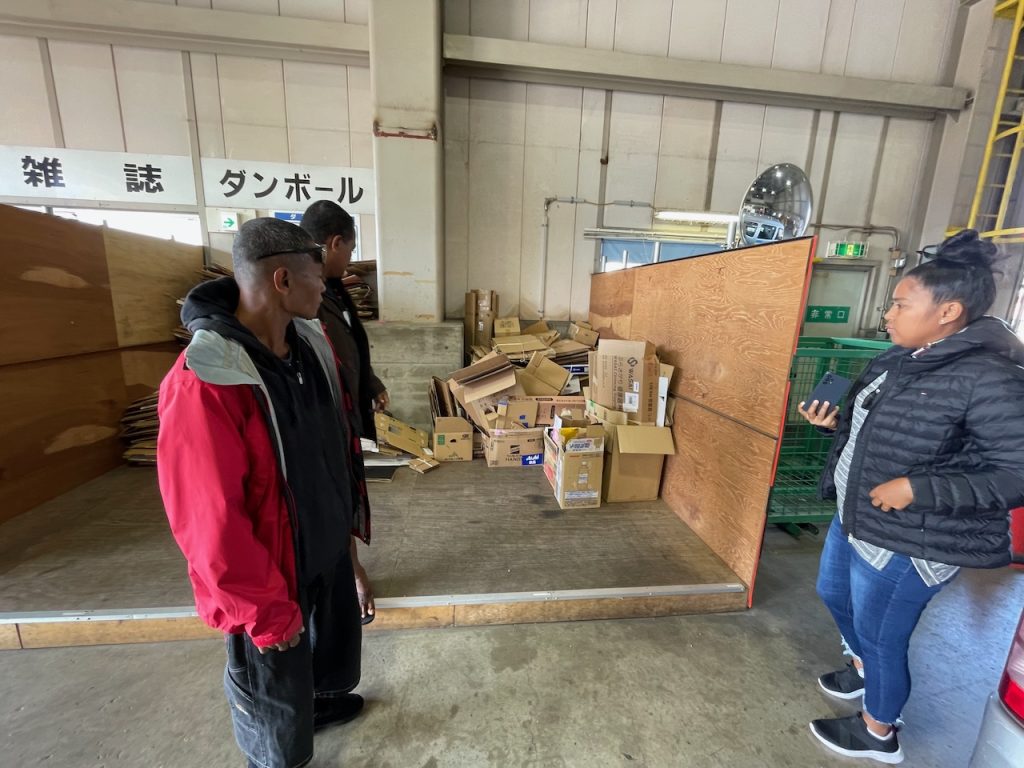Three leaders from Yap joined ecotour training in Japan
エコプラスがJICAの支援を受けて展開している、ミクロネシア連邦ヤップ島タミル地区でのエコツアープロジェクトで、現地の3人の指導者が4月3日から9日までの日程で日本での研修活動を行いました。
来日したのは、ヤップ島タミル地区で自然保護活動に取り組んでいるタミル自然保護基金(TRCT)の役員アロイシス・リブモウさん(45)、ケン・エゼキエールさん(39)、ジャニス・タマンギデッドさん(29)の3人。
Three local leaders of an eco-tourism project in the Tamil region of Yap Island, Federated States of Micronesia, implemented by ECOPLUS with support from JICA, visited Japan for training activities from April 3 to 9.
The three who came to Japan were Lubumow (45), Ken(39), and Janice (29), officers of the Tamil Resources Conservation Trust (TRCT), which is engaged in conservation activities in the Tamil municiparity of Yap Island.
ビザ発給のためにグアムで3日滞在したあと、3日夕に成田空港に到着。翌4日から三宅島に渡って、現地でエコツアー活動を長く展開してきた海野義明さん、佳子さんご家族の元に滞在させていただきました。三宅島は2000年の大噴火で全島民が4年余に渡って避難するなど、噴火との戦いが島の暮らしの根っこに存在しています。一行は、火山噴出物で真っ黒になっている地面にびっくり。海岸も陸地もいたるところが噴火とのつながりを見せています。
After spending 3 days in Guam to obtain visas, they arrived at Narita Airport on the evening of the 3rd. The next day, the 4th, they flew to Miyakejima to stay with Yoshiaki and Yoshiko Unno’s family, who have been involved in ecotourism activities there for a long time. Miyakejima has been battling volcanic eruptions for years. The island’s way of life is deeply rooted in the struggle against eruptions. The group was surprised to see the black ground by volcanic ejecta. Everywhere on the coast and on the land there is a connection to the eruption.
その噴火の影響で、栄養分が少ない環境で、空気中の窒素を固定化する樹木オオヤシャブシが育ち、次にススキが生えて、植生が回復していく様子を説明してもらいました。
さらに、そのオオヤシャブシを数メートル間隔で植えることで土地に養分を与え、そこに特産の野菜アシタバを育てる知恵を見せてもらいました。
The group was told how the growth of the Oyashabushi tree, which fixes nitrogen in the air into the soil, in a nutrient-poor environment, followed by the growth of silver grass, and then the recovery of vegetation.
The participants were also shown the wisdom of planting the Oyashabushi trees at intervals of several meters to provide nutrients to the soil and to grow ashitaba, a local vegetable.
海岸部分では、断崖絶壁に黒潮が打ち付ける光景に見入っていました。ヤップ島では、島全体がサンゴ礁で囲まれ、切り立った断崖を見ることは出来ません。
サンゴ礁に囲まれた波のない礁湖(ラグーン)と呼ばれる静かな海と、砕けたサンゴが作る白い砂浜が当たり前のヤップとは、まったく違った光景に、自分たちの自然環境の価値にも気付いていたようでした。
On the coastal part of the island, we watched the Kuroshio Current lapping against the cliffs. On Yap Island, the entire island is surrounded by coral reefs, and you cannot see the sheer cliffs.
They seemed to have realized the value of their natural environment in the very different scene from Yap, where the calm sea, called a lagoon, surrounded by coral reefs without waves, and white sandy beaches made of crushed coral are the norm.
後半は、雪が残る新潟県南魚沼市に移動。日本人の食を支えるおコメが、どのように造られてきたかを、エコプラスが行っている無農薬田んぼでの体験活動を通してどのように伝えているかを学んでもらいました。3人は、実際に雪が解けたばかりの田んぼに入り、木灰をまき、三本ぐわで古株を起こし、シャベルとくわであぜを作り直す作業を体験しました。
田んぼを巡る水がどのよう配置され、その流れがどのよう管理維持されているかも、説明を聞きました。
ヤップ島では、日本のサトイモが巨大に育ったようなタロイモが主食となっていて、田んぼのような湿地がタロイモ畑として管理されています。
They seemed to have realized the value of their natural environment in the very different scene from Yap, where the calm sea, called a lagoon, surrounded by coral reefs without waves, and white sandy beaches made of crushed coral are the norm.
In the second half of the tour, we moved to Minamiuonuma City in Niigata Prefecture, where snow still lingers. The three of them actually entered the rice fields where the snow had just melted and experienced the process of spreading wood ash, raising old stubble with three stakes, and rebuilding the edge of the rice field with shovels and hoes.
They also heard explanations of how the water around the rice fields is arranged and how the flow of water is managed and maintained.
On Yap Island, the staple food is taro and wetlands like rice paddies are managed as taro fields.
異なっているようで、似ていることをしているんだな、とルブモウさんはふり返りで語っていました。
エコツアーはいろいろな解釈がされて世界中でさまざまに展開されています。
その場の自然と伝統的な暮らしの関係を理解することで、次の社会づくりへのヒントを探す、そんなことがヤップ島でのエコツアーの軸になっていきそうな研修でした。
They seem different, but they do similar things, Lubumow said in his reflections.
Ecotourism is interpreted and developed in many different ways around the world.
It seemed that understanding the relationship between nature and traditional lifestyles in a given place and looking for clues for the next sustainable future would be the axis of ecotourism in Yap Island.









